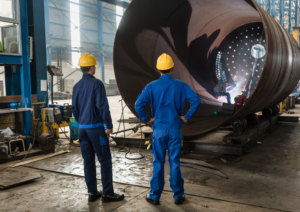The term climate technology refers to any particular advancement in technology that helps address the concern of escalating climate change. Core to this idea is the notion of leveraging technologies to help reduce greenhouse gas emissions through the use of renewable energy sources such as wind, solar, and hydropower. Further examples of climate technology involve implementing infrastructure to help at-risk communities cope with the effects of climate change and rising sea levels.
Since the 2015 Conference of the Parties (COP) in Paris, climate technology companies have seen a massive uptick in appearance and value. In fact, according to a report by CNBC, the year on year average for venture capital investments into climate technology has risen exponentially since 2015. As of November 2021, overall investments have already exceeded that of the previous year, and have more than quadrupled the annual investments in 2016. What’s even more impressive is that the projected investment numbers are expected to rise even more. Rooted in this bullish momentum of investment is the core concern of irreversible climate change. Large entities recognise a basic need for climate technology that ostensibly aids eco-sustainability and promotes a greener environment.
How Does Climate Technology Work?
The simplest way that climate technology works to fight climate change is through optimising efficiency and reducing unnecessary wastes in all areas. This could take the form of better processors in computers that don’t consume as much electricity or electric vehicles that don’t require fossil fuels to operate. The ultimate process of climate technology is doing more with less.
Within South-East Asia there are companies that are doing just that – pushing exceptional climate tech initiatives for the sake of the planet. A case in point is the Singaporean startup Neuron, which was founded in 2017 with the goal of building a “more sustainable future through new ways of moving.” The startup focuses on the idea of renting electric scooters for mobility, offering users a more eco-friendly option for commuting. Compared to the fossil fuels burnt by traditional vehicles, Neuron’s e-scooters exhibit significantly fewer carbon emissions for operations.
What Changes Can Climate Technology Bring About For ESG?
Climate technologies are inherently linked to Environmental, Social, and Governance factors as well. Historically, the lack of transparency from large corporations and institutions have made it tough to hold them accountable. Climate technologies are tangible ways for the population at large to ensure that these same entities are doing their part to help fight climate change.
Furthermore, climate technologies and ESG pair hand in hand when it comes to achieving shared goals. ESG often focuses on meeting the criteria set forth by all stakeholders (companies, investors, shareholders) and being clear about the measures taken to achieve that. Internally, we can see how climate technologies can be utilised by these leaders to make clear their intentions and behaviour. By setting agendas and financially prioritising ESG criteria, the effect of climate tech in advancing nett-zero carbon emission goal is made even clearer.
Does Climate Technology Actually Work?
Setting the stage now, one big question many might have is whether climate technology is actually feasible and effective. People want to know to what extent climate tech could help the human race work to reverse the damage caused by years of greenhouse gas emissions. Given the broad categorisation of climate tech, I would argue that it is already yielding valuable results.
Practical approaches with climate tech such as the revolution of soy-based meat substitutes have shifted consumer patterns towards a more sustainable future. Key opinion leaders have also heavily advocated for a pivot away from fossil fuels in the past decades. Establishing renewable and green energy sources is another way that climate tech can directly battle climate change. All in all, it appears that climate tech is still approaching the point before critical mass and it’s safe to say that investments towards the industry seem hopeful. If anything, the pathway our population is destined to walk seems apparent to be built on technologies that secure our longevity. Like our forefathers and those before them who had to embrace the online and industrial revolution respectively, it is up to us to embrace the development of the green revolution today.





